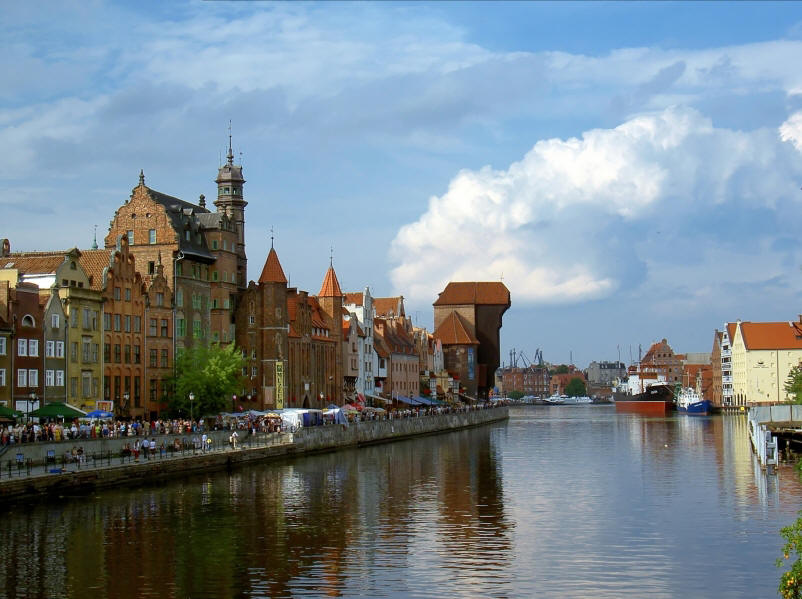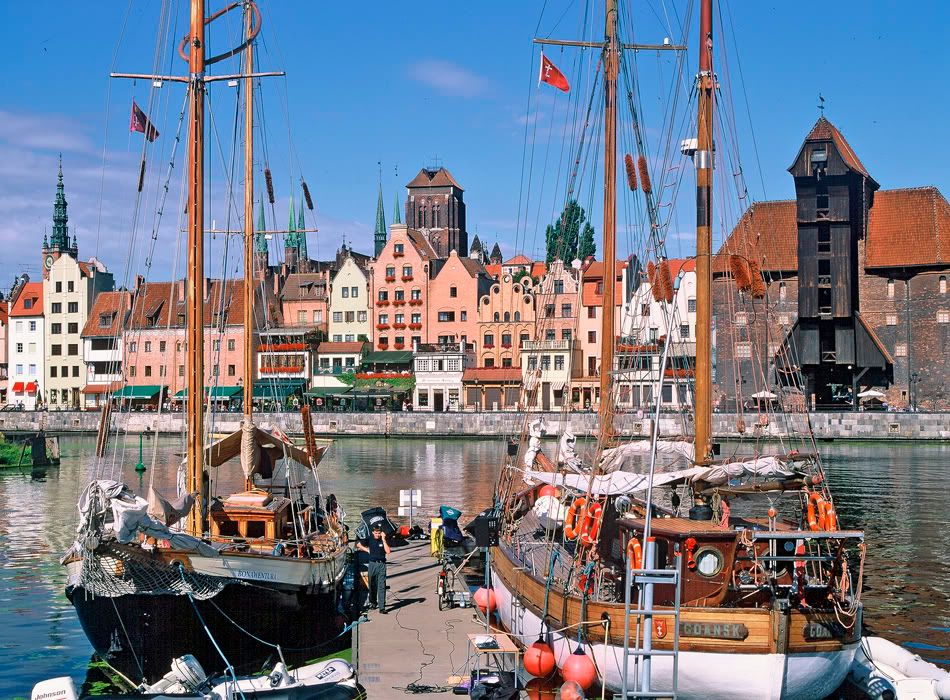
Gdañsk is an important port, situated at the mouth of the Vistula River on the Baltic Sea, and throughout its history has been a major trading centre. It is the best known of the Tri-City complex that it forms with the modern seaport of Gdynia and the fashionable beach resort town of Sopot.
Its turbulent history includes the rule of the Teutonic Knights in the 14th century, who then lost it to Prussia, and after the first shots of World War II were fired at the nearby Polish garrison Westerplatte, it came under occupation of Nazi Germany in 1939. Like many Polish towns, Gdañsk lay in ruins after the war, but it was meticulously rebuilt over a 20-year period, returning it to its former glory. The interesting architecture and beautiful painted buildings are part of the town's historic charm.

The richest architecture is visible in the historic quarter of the Main Town. Its main thoroughfare, known as the Royal Way, is spectacular. Lined with magnificent buildings featuring beautifully painted facades and entered through grand stone gateways at either end, this was the route along which the Polish Kings paraded during their visits. The most splendid façade in town belongs to the Golden House, one of Gdañsk's most impressive buildings, along with the Town Hall and Artus Court. In front of the Court, the gathering place of the old merchants, stands the Renaissance-style Neptune's Fountain. Along the waterfront with its fashionable restaurants and cafes, the huge Gdañsk Crane dominates the promenade, the largest crane in medieval Europe and today housing the Maritime Museum.

Parallel to the Royal Way is Gdañsk's most picturesque street, Mariacka Lane, lined with quaint 17th Century burgher houses with decorative steps and iron railings. The gigantic St Mary's Church towers over the city and offers splendid panoramic views.
No comments:
Post a Comment